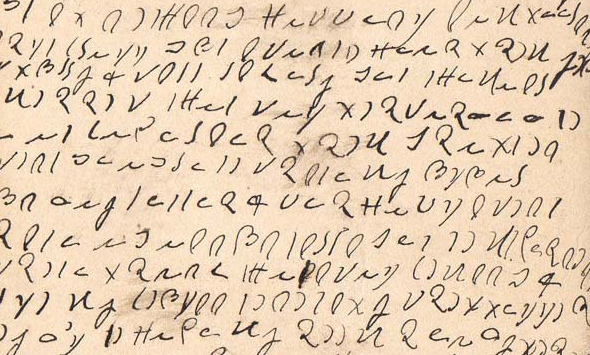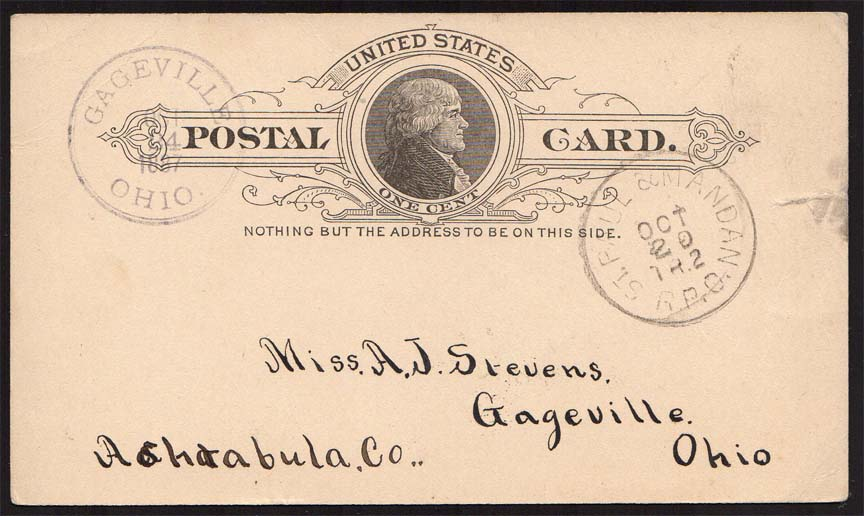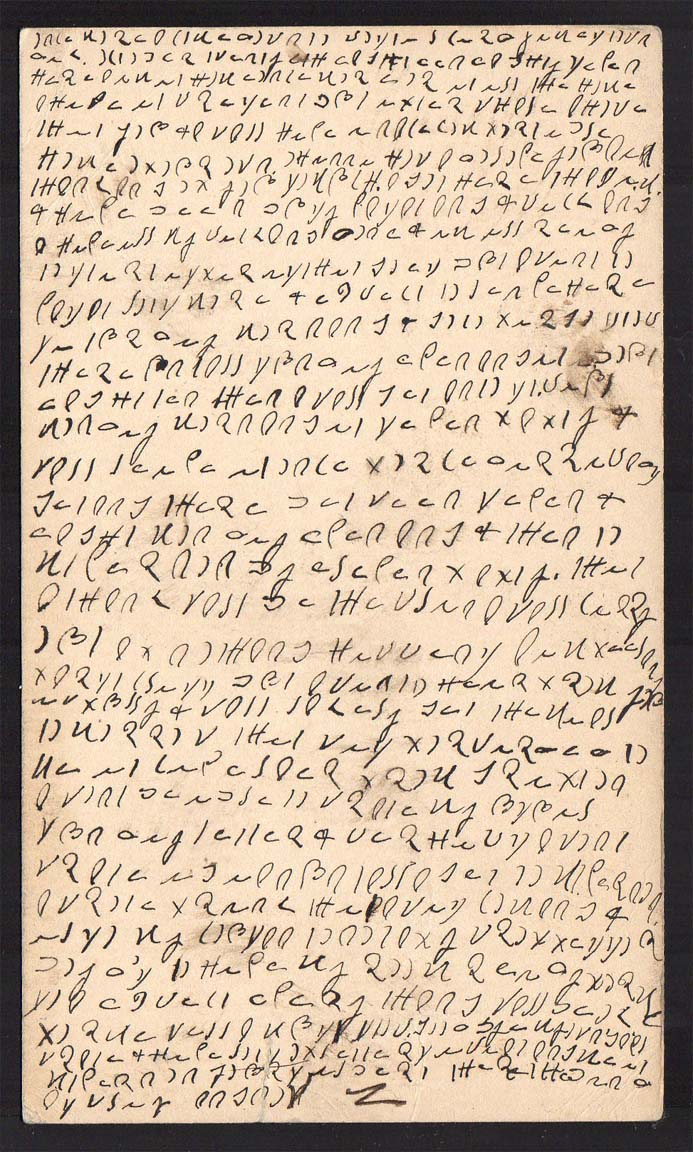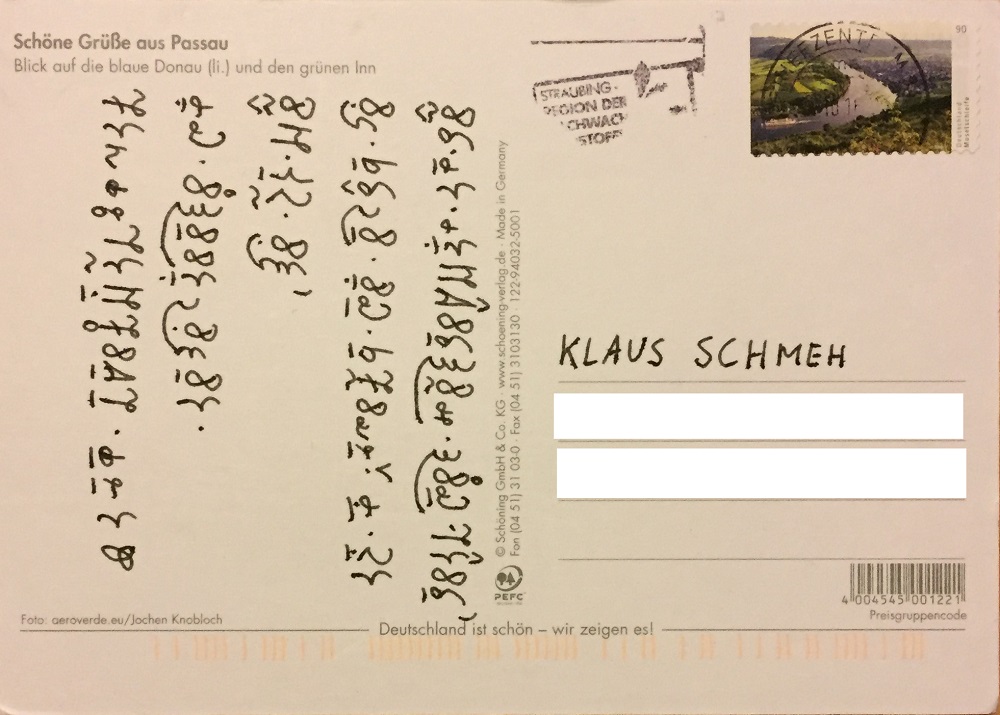A number of encrypted postcards from different times and places wait to be solved. Can a reader help?
Once in a while I perform a Google search for “encrypted postcard”. I always get a lot of results, and if I’m lucky, I even find encrypted postcards that are unsolved and new to me. My latest search, yesterday evening, was successful. I found two unsolved encrypted postcards hitherto unknown to me. Also yesterday, a blog reader sent me an encrypted postcard he has purchased recently. Together with a postcard I received by mail a few weeks ago I have now a collection of four unsolved postcard cryptograms. I will introduce these in this blog post and in the next one.
A postcard from Ohio (1887)
The first postcard I’d like to introduce is one I found via Google. It is presented in a stamp collector forum. The owner asks the readers of this forum for help to decrypt it – so far without success. The postcard was sent to a woman in Ohio. It was stamped at a place named “St. Paul & Mandan”, which I couldn’t find via Google. The stamp on the left side shows the year 1887.
The complete message on the rearside of the card is encrypted:
Can a reader break this encryption? The cipher method used is probably a simple letter substitution. The spaces between the words are hard to identify, which makes this task more difficult.
A postcard from Passau (2016)
It happens once in a while that a blog reader sends me an encrypted postcard. I usually don’t publish such a card on my blog, as I prefer to write ab out historical cryptograms. However, in this case I’ll make an exception. The following postcard was sent to me from Passau, Germany, a few weeks ago:
Of course, there’s a certain risk that the cleartext of this card contains something private or insulting. However, I’m curious, so if you can solve this encryption, please tell me.
I already published this postcard in the “Crypto History” group at LinkedIn. Bill Briere, an experienced cryptologist, wrote: “My take: <spoiler>It appears to be a (slightly modified) simple substitution cipher, with all or nearly all of the alphabet represented. Vowels are written as diacritic-style marks above and below the consonants that they follow (the ones above have umlauts and the ones below don’t). Spaces between words are indicated with single midair dots. The first and third lines end with commas; the dot with a v above it in the second line might be a question mark; and the final line seems to end with a period or exclamation point. I suspect that this note does not include a pro-forma salutation and sign-off. If these hints haven’t ruined it for everyone, this should be fairly simple to break, especially for any native speakers of German.</spoiler>”
Follow @KlausSchmeh
Linkedin: https://www.linkedin.com/groups/13501820
Facebook: https://www.facebook.com/groups/763282653806483/






Kommentare (21)